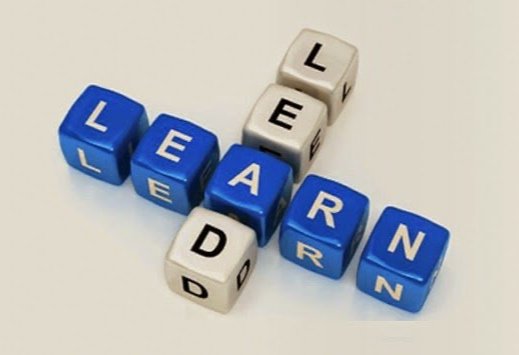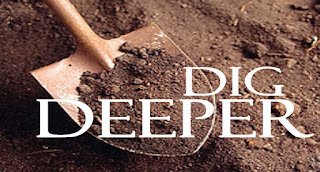Originally published on February 9, 2023.
As leaders grow and evolve from their first supervisory role and look to progress through more responsible and demanding positions, inevitably the question arises as to how they can become more strategic. But like a variety of leadership concepts, not nearly enough is said, nor is enough support provided to aspiring leaders, as to what strategic actually is or means. Lacking in a clear understanding of the concept means that individual leaders can be left to figure that reality out on their own and engage in a variety of activities that may or may not enhance their strategic thinking.
What then makes up a strategic mindset? I suggest that there are several key components that comprise this overarching concept, and by breaking the idea down to these elements we can promote understanding and engage in more targeted and purposeful efforts to enhance our strategic thinking - at both a personal and organizational level.
Interrogating Reality
When setting the stage for future plans and or trying to vision the future, too many managers, leaders and organizations solutions jump. By that I mean that they immediately think about where they would like to be in the future and fail to appreciate what position of strength or weakness they are starting from. Their future plans – either as an individual or as an organization – are not grounded in current reality. Jim Collins in “Good to Great” describes this process as confronting the brutal facts. He noted that the most successful companies – those that moved from good to great and sustained that level of performance year-over-year – were honest and diligent in determining the truth of a situation. This effort alone, in his estimation, helped leaders and companies identify the right path forward based on decisions that became self-evident.
A Systems Perspective
A strategic mindset calls upon an individual leader and/or organization to consider a broad range of factors, forces and components that are at play both within the individual organization but also within that organization’s broader sector and environment. In this move from a focus on individual resources/goals and an elevation from unit-specific or department level goals, an effective leader changes their perspective to a higher vantage point. Certainly we can appreciate that this ability to think at a broader system level for any one individual can be a function of stage of career or level within an organization. However, to be as effective as possible in a leadership role and provide better direction and rationale for decisions for one’s team, the benefits in understanding how day-to-day tasks fit into the bigger picture can support more effective engagement and execution of job duties.
Intent Focused – The Vision
Earlier we talked about the ability to strongly interrogate the reality facing a leader or an organization. This relates to both the internal and external factors at play – what are our strengths and weaknesses, and what are the threats and opportunities outside of us. We suggested that anyone involved in setting a strategic direction forward had to be grounded in the same reality. What makes this assessment far more effective is also knowing to what end we are directing this investigative effort. Strategic intent provides a focus that allows individuals within a team or organization to leverage their energy, thinking and capacity to a common cause. BreakPoint Solutions mirrors this approach by asking our clients to begin with the end in mind or convey to us what success would look like in the timeframe under consideration for a project or initiative.
The Importance of Timing
A strategic mindset also takes in the consideration of time. A strategic thinker assesses time from a few different angles – the past, present and the future. Coming back to strategic intent, Dr. Jeanne Liedtka (1998) suggests that effective strategic thinkers ask themselves this core question:
“Having seen the future that we want to create, what must we keep from our past, lose from that past and create in the present to get [to a preferred future state]?”
This question not only frames work within the context of the desired future state, it also takes into account what has been learned from interrogating reality, assessing what the organization may be good at, and what skills or capacities it needs to develop to be successful. When you think strategically, you are always connecting the past to the present to the future. You learn from the past and use that learning to make predictions. You look at the present to assess the gap between where you are now and where you want to end up.
Intelligent Opportunism
Effective leaders and organizations continue their environmental scans, their assessment of organizational strengths and weaknesses, and evaluation of opportunities and threats on a continuous basis. They recognize that the assumptions and facts upon which they developed their initial plans are always subject to change. The concept of intelligent opportunism then should be understood as encompassing factors such as flexibility, adaptability and continuous learning. This can be where some organizations lose the forest for the trees. They either question the value of long-term strategic plans (because the environment is always changing) or doggedly follow such plans to the bitter end regardless of changed reality.
The key to applying the concept of intelligent opportunism within a volatile environment that all organizations operate within is to keep the long-term vision in mind while being flexible on tactics and timing in the short-term. The balancing act then becomes:
Create, establish, and maintain long-term vision –
where do we want to be in 3, 5 or 10 years? What are we striving for or to become?
AND
Evaluate the success, necessity and need for adjustment in our short-term goals and tactics every day, week, month and year. Are we doing the right things to get us where we want to be?
Hypothesis Driven
The final element of a strategic mindset is the ability to vigorously explore a perspective, with an idea in mind, but with a view to testing the validity of that idea and the path towards the goal. In this case, a strategic mindset and strategic thinking mirrors the scientific method. As strategic thinkers – as curious leadership scientists – we begin with a question or assumption in mind. That question might start with “What if?” or “Why not?” or “Could it be?”. One of the keys here is to suspend judgement, a willingness to acknowledge our biases, and vigorously challenge our assumptions.
Our initial question(s) could then progress into a series of “If this happens…what could happen next?” This allows us to explore and pursue multiple options either as we interrogate reality, create strategic intent, or evaluate other possibilities as they arise. This personal or organizational willingness to test options can be another strong path forward to balancing between a level of appropriate persistence and pure stubbornness. One path keeps us aligned to our goals while the second option can take us over a proverbial cliff.
My hope is that this rather long dissertation helps you understand better this concept of strategic thinking and strategic mindset. Developing this capacity is a critical skill throughout your leadership career. I encourage you to start thinking about you can now move from understanding to purposeful development.
———————————————————————————————————
Greg Hadubiak, MHSA, FACHE, CEC, PCC
President & Founder - BreakPoint Solutions
gregh@breakpoint.solutions
www.breakpoint.solutions
780-250-2543























































